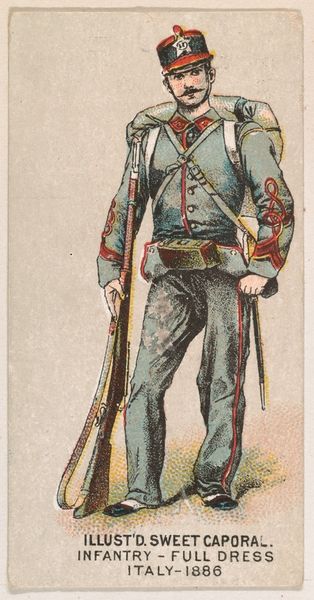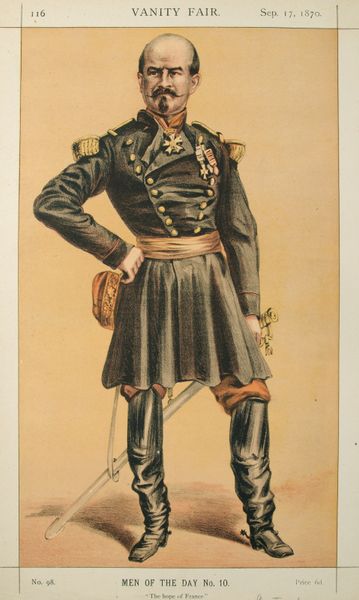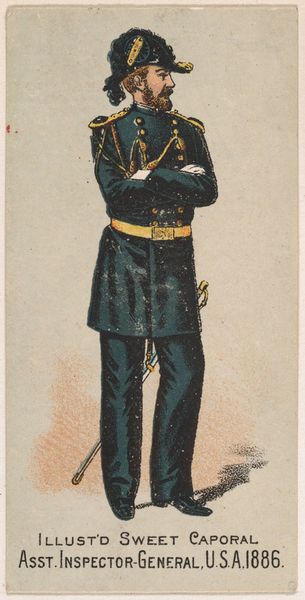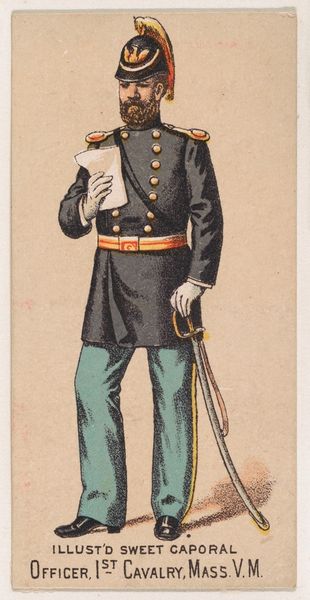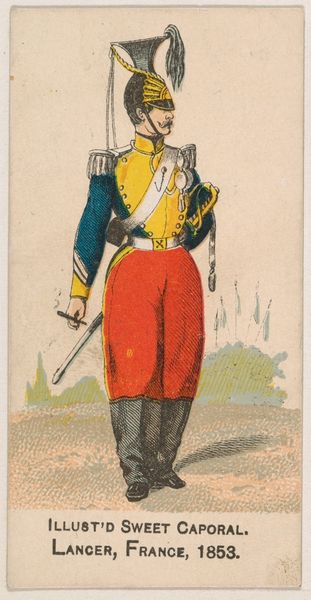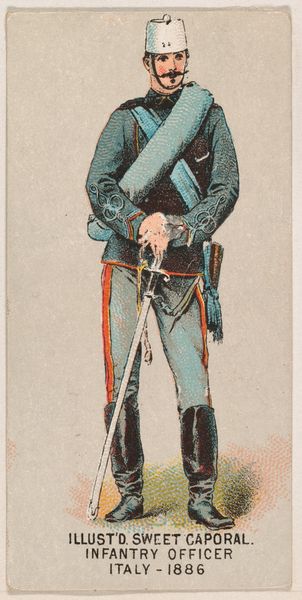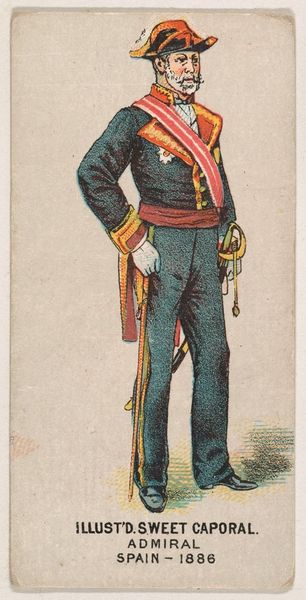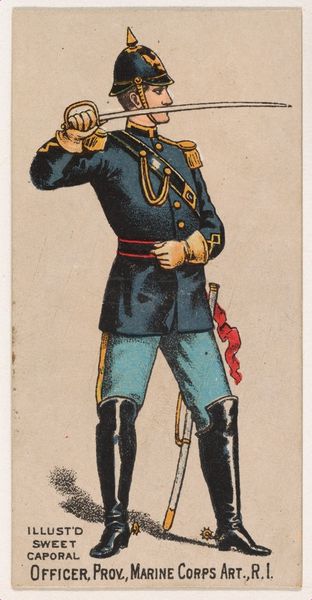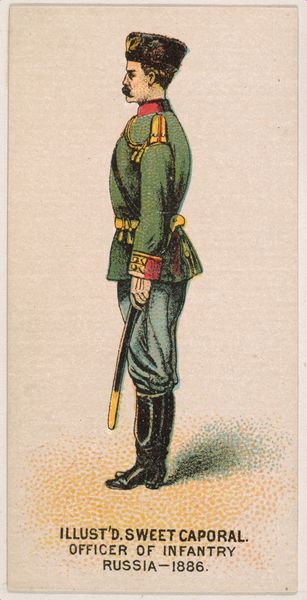
lithograph, print
#
portrait
#
lithograph
# print
#
impressionism
#
caricature
#
caricature
#
portrait reference
#
famous-people
#
male-portraits
#
costume
#
genre-painting
#
history-painting
#
academic-art
#
portrait art
Copyright: Public domain
Curator: This lithograph, entitled “StMan of the day No.066° - Caricature of Count von Bismarck Schoenausen,” was created in 1870 by James Tissot. It was published in Vanity Fair magazine, as the inscription at the top shows. Editor: Immediately, I'm struck by the subject's steely gaze and formidable military attire. There's a real sense of power projected here, even in this caricature form. Curator: Precisely! This is Otto von Bismarck, the first Chancellor of Germany. Consider the moment this work was created – 1870, the height of his power, as Prussia was on the verge of unifying Germany through military victories. Editor: So, the uniform, the posture – they're not just aesthetic choices. They're part of a constructed image of strength and dominance, aren't they? Bismarck is posed stiffly, the shadow behind him enhances his strong physique. The light and contrast of black and white further accentuates his authoritarian presence in the print. Curator: Exactly. Caricature allowed for a critical, often subversive commentary, but within limits. The features are exaggerated, but the recognisability and grandeur are retained, almost reinforcing Bismarck's importance. The costume plays a critical role here, signifying power. Editor: The helmet and map further ground him within the military and political landscapes. Do you think this portrayal aimed to critique his politics or perhaps immortalise his political impact? Curator: Good question! The artist, James Tissot, like many at the time, navigated a complex relationship with powerful figures like Bismarck. While the piece is humorous, its existence in *Vanity Fair* suggests it spoke to a certain British fascination – and perhaps apprehension – regarding Bismarck's rising power in Europe. The "Man of the Day" series implies a level of celebrity, regardless of political stance. It's about representation and impact on the world stage. Editor: It's a potent reminder that images of powerful men often play a crucial role in shaping their public perception, reinforcing existing power dynamics, or subtly challenging them. Thank you, this print carries a complex history and representation. Curator: My pleasure, and food for thought about how caricature, even while seemingly playful, participates in constructing and maintaining narratives of power and influence.
Comments
No comments
Be the first to comment and join the conversation on the ultimate creative platform.

